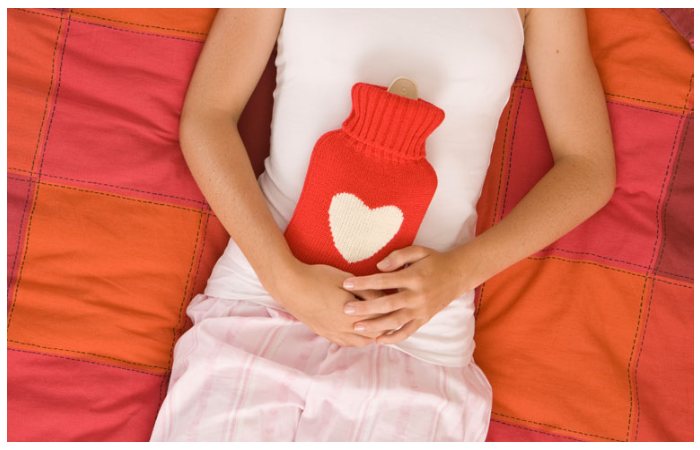Uterine Fibroids: You may know that abnormal vaginal bleeding and irregular menstrual cycles are signs of hormonal imbalance in women. If the discomfort is overwhelming in such cases, it can be a sign of uterine fibroid.
A non-cancerous tumor in the uterus can also cause unbearable pain during sex. A fibroid located near the cervix of the uterus can make many sexual positions uncomfortable for women.
Finding the best treatment options for fibroids to enjoy your sex life is a daunting task. Here are the best identification and treatment processes for painful fibroids.
Table of Contents
What is a Uterine Fibroid?
The Society of Interventional Radiology recently conducted the USA Fibroid Health Survey and reported that age, income level, health insurance, and healthcare proactivity affect fibroid health outcomes among 80 percent of women aged 50.
A non-malignant tumor growth near the uterus or the area surrounding the pelvic area is called uterine fibroid. These are commonly known as Leiomyomas or myoma.
Fibroids are made of benign muscles and connective tissues from the walls of the uterus. These can grow as a single node or in clusters. Small fibroids are asymptotic growths.
Large tumors that take up almost the entire uterus wall need immediate treatment or removal. This non-cancerous growth push against the urinary bladder and causes unbearable pain.
How Do Fibroids Affect Sex Life?
The uterus is a powerful organ that plays a vital role in pregnancy and reproduction in women. Depending on the location and size, non-malignant tumors in the uterus can interfere with your sex life.
Some common ways in which fibroids affect your sex life are:
- Chronic pain after vaginal penetration.
- Heavy bleeding during intercourse.
- Irregular menstruation cycles.
- Sudden bleeding between period cycles.
- Abdominal enlargement can hamper your overall look.
- Lower back pain post intercourse
- Frequent urination.
- A smelly vagina with abnormal discharge.
Women often experience tiredness after physical activities after they lose a lot of blood post sexual intercourse. It can make them weak with lower energy levels. Hormonal imbalance can cause obesity.
Obese women lose self-confidence and interest in sex life.

How Are Fibroids Diagnosed?
Stabbing pain during sex is a significant sign of an underlying uterine fibroid. Here are a few ways in which these non-malignant tumors are detected.
Ultrasound Sonography
An ultrasound machine employs sound waves to take a picture of the uterus. The doctor will move the transducer device over the transvaginal or transabdominal route to see the internal images.
The non-invasive method can identify and measure the size of fibroids in women.
Abdominal Ultrasound
An abdominal ultrasound is a noninvasive procedure used to assess the organs and structures within the abdomen. This includes the liver, gallbladder, pancreas, bile ducts, spleen, and abdominal aorta. Ultrasound technology allows quick visualization of the abdominal organs and structures from outside the body.
Lab Tests
If you have abnormal signs and symptoms that indicate a tumor in the uterus, doctors may advise you to get a blood test done. A complete blood count (CBC) can help to identify other hormonal-related problems like thyroid and anemia.
MRI
Magnetic resonance imaging tests can identify the exact size, location, and the exact type of fibroid causing pain during sex in women. Book a private MRI Scan for prompt diagnosis to the correct treatment, or can put your mind at rest.
Hysterosonography
This method is helpful for people with heavy menstrual bleeding. It uses saline infusion to expand the uterine cavity. Doctors can take better images of the submucosal fibroids along the lining of the uterus.
Hysteroscopy
The technician inserts a telescope called a hysteroscope through the cervix of the uterus. It helps to check the fallopian tubes and the parts of the uterus for the presence of fibroids.
How Are Fibroids Treated?
Treatment plans for fibroids depend on various factors that include:
- Number of fibroid clusters
- Size of the tumors
- Location of the fibroids
- Underlying symptoms
- Age and hormones
- Fertility goals
Medication
Smaller fibroids that cause manageable discomforts can be treated by over-the-counter medicines, iron supplements, oral contraceptives, or intrauterine devices.
Gonadotropin-releasing hormone (GnRH) agonists
These medicines are taken via an injection or a nasal spray. They stop the production of male hormones like estrogen and progesterone.
The medicine shrinks the fibroids and helps to regularize periods.
Non-invasive Surgery
Performed under an MRI scanner, this method is done for outpatients to preserve their uterus. The transducer sims hot sound waves into the fibroid and destroys the tissues.
Invasive Surgery
With uterine artery embolization, tiny particles called embolic agents are injected into the arteries. These particles stop the flow of blood to the fibroids.
It causes the tumors to shrink in size and die. An interventional radiologist conducts this surgery.
Laparoscopic radiofrequency ablation uses radiofrequency to destroy the tumors in the uterus. It is among the safest and effective treatment methods for uterus tumors.
Final Words
Maintaining a healthy lifestyle and scheduling regular pelvic checkups with your gynecologist is vital to avoid higher risks with uterine fibroid.
It is essential to identify and treat tumors at the right time to avoid life-threatening complications.
Also Read: KNOW YOUR USUAL KOREAN SKINCARE INGREDIENTS WITH NATURE REPUBLIC






